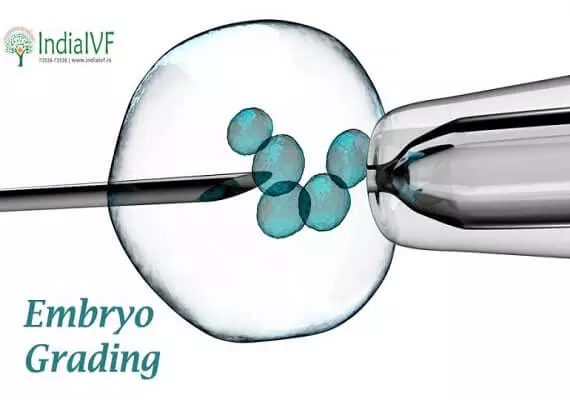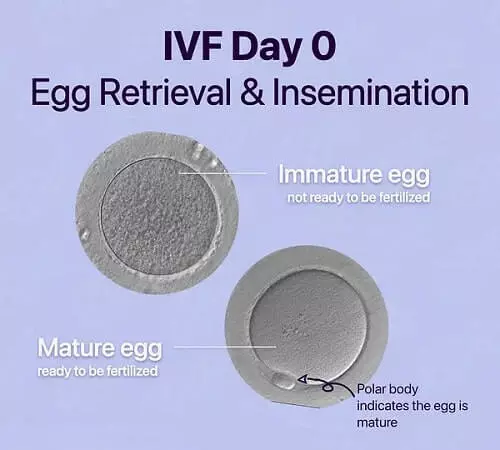Your cart is currently empty!


Embryo grading is a process that evaluates the quality and development of embryos during IVF treatment in order to determine their health and likelihood of successful implantation.
Embryo grading is a process used in in-vitro fertilization (IVF) to evaluate the quality of embryos before they are transferred to the woman’s uterus. Embryo grading is typically performed on the third day after fertilization, when embryos have developed to the 6-8 cell stage, or on the fifth or sixth day after fertilization, when embryos have developed to the blastocyst stage.
During embryo grading, embryologists examine the size, shape, and symmetry of the cells, as well as the presence and quality of certain structures within the embryo, such as the zona pellucida (the protective outer layer of the embryo) and the blastocoel (the fluid-filled cavity within the embryo).

Based on these criteria, embryos are assigned a grade or score that reflects their quality and likelihood of implantation and subsequent development into a healthy pregnancy.
The grading system varies between clinics and embryologists, but generally, embryos are graded on a scale of 1 to 4, with 1 being the highest quality and 4 being the lowest. Embryos with the highest quality grades are typically selected for transfer to the woman’s uterus, with the goal of improving the chances of a successful pregnancy. However, it’s important to note that embryo grading is not a perfect predictor of success, and some lower-quality embryos may still result in a healthy pregnancy.
During the process of Embryo Implantation in IVF, the embryos are cultured for around six days and during that period they receive quality grades every day.
The maturity of the egg is important as a mature egg has the best chance of getting fertilized. The three different stages of egg maturation are:
Good:
Fragmented/abnormal polar body
Poor

Fertilization can be seen clearly after 16 to 22 hours after the process of insemination. Normal fertilization can be seen by exactly two pronuclei in the center of a one-celled zygote. Fertilization is not abnormal when there is a single pronucleus and when there are more than two pronuclei present.
On day two the single-cell zygote should divide into an embryo (approx. two to four cells). On day three the embryo should continue to divide (four to eight cells).
Embryo Quality:
On the 4th day, the transition of embryos begins from a multi-cell embryo to a highly advanced developmental stage. Embryos then start compacting and forming morulae. Cells of a morula-stage embryo are not quite distinct like the previous days, and hence these embryos fail to receive quality grades.
A blastocyst is a developed embryo that comprises two different cell types: one group of cells is referred to as the inner cell mass, which forms the fetal tissue, and another group of cells, known as the trophectoderm, helps in the formation of the placenta. Blastocysts are graded on the basis of their expansion (early, expanding, expanded, and hatching) as well as on the basis of the quality of these two different cell types (graded on a good-fair-poor scale). Blastocysts that are good or even fair in quality can be frozen.
Embryo grading is an essential process in the field of assisted reproductive technology (ART) where embryos are evaluated based on their quality and developmental stage. Here are some reasons why embryo grading is important:
Embryo grading is an important tool in the field of ART that can increase the chances of a successful pregnancy and live birth, optimize the timing of embryo transfer, reduce costs, and address ethical concerns related to embryo selection.
Embryo grading is the process of evaluating the quality of embryos during in vitro fertilization (IVF) or other assisted reproductive technologies (ART). The grading system assigns a score based on the appearance of the embryo, including its cell number, size, and symmetry. Embryo grading is important because it helps fertility specialists select the best embryos for transfer, which can increase the chances of a successful pregnancy.
In embryo grading, the most important factors to consider are the morphology or appearance of the embryos and their developmental stage. The morphology of an embryo is evaluated based on factors such as the size, shape, and organization of its cells, as well as the presence of any abnormalities. The developmental stage of the embryo refers to the number of days that have elapsed since fertilization and the degree of cell division that has occurred.
Embryo grading is typically performed by embryologists who specialize in ART. They use a microscope to examine the embryos and evaluate their appearance based on established grading criteria. The grading system can vary depending on the fertility clinic, but it typically involves assigning a letter or number grade to the embryo based on its quality.
Several factors can affect embryo grading, including the age and health of the woman undergoing IVF or other ART, as well as the quality of the sperm used for fertilization. Other factors that can impact embryo grading include the method used to culture the embryos, the timing of embryo transfer, and any additional procedures performed during the IVF cycle.
While embryo grading can help fertility specialists select the best embryos for transfer, it cannot guarantee a successful pregnancy. Many factors can influence the success of IVF, including the health of the woman’s reproductive system, the quality of the sperm used for fertilization, and the timing of embryo transfer. However, studies have shown that higher-quality embryos are more likely to result in a successful pregnancy than lower-quality embryos.
Embryo grading is a non-invasive procedure that does not pose any significant risks to the woman or the embryos. However, there is a small risk that the grading process could damage or disturb the embryos, although this risk is generally considered to be low. Fertility specialists take precautions to minimize any potential risks associated with embryo grading, such as using sterile equipment and handling the embryos carefully.
At India IVF Clinics we provide the most comprehensive range of services to cover all the requirements at a Fertility clinic including in-house lab, consultations & treatments.